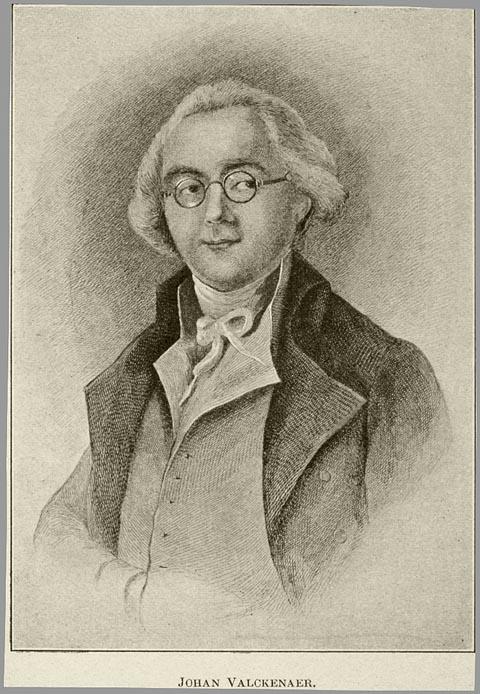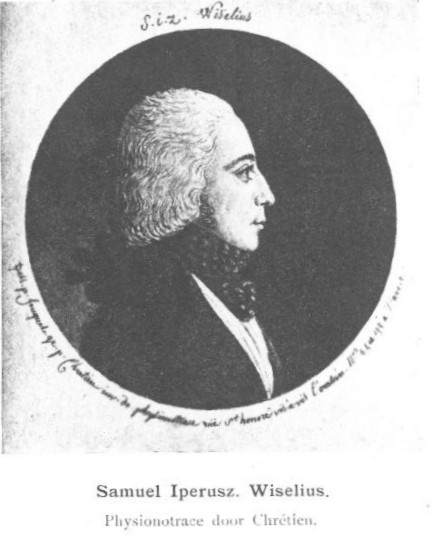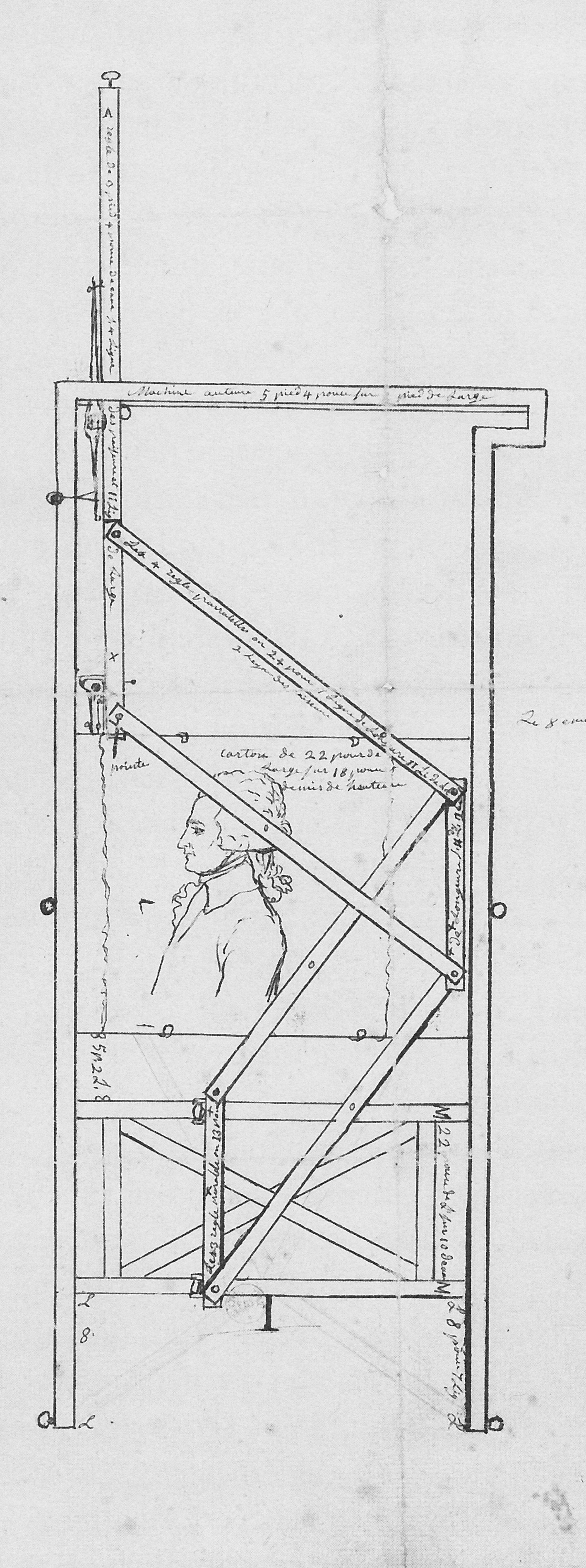|
Gilles-Louis Chrétien
Gilles-Louis Chrétien (5 February 1754 – 4 March 1811) was a French cellist and engraver. Chrétien was born at Versailles. In 1787 he invented a machine called a "physionotrace", with which he took portraits in profile from life. He worked initially with Edmé Quenedey, but then went into partnership with the miniaturist Jean-Baptiste Fouquet, until the latter's death in or about 1799. Fouquet produced the ''grand trait'' drawing, sometimes highlighted or coloured in pastel, which Chrétien then engraved in aquatint. Many of these portraits are of great interest on account of the celebrity of the persons represented, for example "L'Incorruptible" Maximilien Robespierre, Robespierre, Honoré Gabriel Riqueti, comte de Mirabeau, Mirabeau, and Jean-Paul Marat, Marat, who were among the hundreds which he produced. Also, Dutch patriottentijd, patriots, such as Johan Valckenaer, Samuel Iperusz Wiselius and Quint Ondaatje, who fled to France or visited Paris, ordered sets of physiono ... [...More Info...] [...Related Items...] OR: [Wikipedia] [Google] [Baidu] |
Portrait De Monsieur Chrétien (G L), Musicien Du Roy, Inventeur Du Physionotrace Et Graveur (cropped)
A portrait is a painting, photograph, sculpture, or other artistic representation of a person, in which the face is always predominant. In arts, a portrait may be represented as half body and even full body. If the subject in full body better represents personality and mood, this type of presentation may be chosen. The intent is to display the likeness, personality, and even the mood of the person. For this reason, in photography a portrait is generally not a snapshot, but a composed image of a person in a still position. A portrait often shows a person looking directly at the painter or photographer, to most successfully engage the subject with the viewer, but portrait may be represented as a profile (from aside) and 3/4. History Prehistorical portraiture Plastered human skulls were reconstructed human skulls that were made in the ancient Levant between 9000 and 6000 BC in the Pre-Pottery Neolithic B period. They represent some of the oldest forms of art in the Middle East ... [...More Info...] [...Related Items...] OR: [Wikipedia] [Google] [Baidu] |
Johan Valckenaer
Johan Valckenaer (Franeker, 21 January 1759 – Bennebroek, 25 January 1821) was a Dutch professor who specialized in Roman law. He was a passionate and combative Patriots (Dutch Republic), patriot who promoted the right to bear weapons. In 1787 he went in exile in France and in 1793 he made proposals for a constitutional monarchy. After his return in 1795 he became professor in Constitutional law, a member of National Assembly, a diplomat and financial counsellor. Life His father Lodewijk Caspar Valckenaer was Franeker university professor in Old Greek and, in 1766, was appointed to succeed Tiberius Hemsterhuis at University of Leiden, Leiden. His family was related to the Luzacs, publishers of the internationally renowned newspaper ''Gazette de Leyde'' – Emilie Luzac and her father Johan Luzac, Johan were Valckenaer's relatives. Johan became deeply interested in classical and French writers such as Voltaire and Rousseau. He graduated in 1781. In 1785 he married Rutgera ... [...More Info...] [...Related Items...] OR: [Wikipedia] [Google] [Baidu] |
19th-century French Engravers
The 19th century began on 1 January 1801 (represented by the Roman numerals MDCCCI), and ended on 31 December 1900 (MCM). It was the 9th century of the 2nd millennium. It was characterized by vast social upheaval. Slavery was Abolitionism, abolished in much of Europe and the Americas. The First Industrial Revolution, though it began in the late 18th century, expanded beyond its British homeland for the first time during the 19th century, particularly remaking the economies and societies of the Low Countries, France, the Rhineland, Northern Italy, and the Northeastern United States. A few decades later, the Second Industrial Revolution led to ever more massive urbanization and much higher levels of productivity, profit, and prosperity, a pattern that continued into the 20th century. The Catholic Church, in response to the growing influence and power of modernism, secularism and materialism, formed the First Vatican Council in the late 19th century to deal with such problems an ... [...More Info...] [...Related Items...] OR: [Wikipedia] [Google] [Baidu] |
18th-century French Engravers
The 18th century lasted from 1 January 1701 (represented by the Roman numerals MDCCI) to 31 December 1800 (MDCCC). During the 18th century, elements of Enlightenment thinking culminated in the Atlantic Revolutions. Revolutions began to challenge the legitimacy of monarchical and aristocratic power structures. The Industrial Revolution began mid-century, leading to radical changes in human society and the environment. The European colonization of the Americas and other parts of the world intensified and associated mass migrations of people grew in size as part of the Age of Sail. During the century, slave trading expanded across the shores of the Atlantic Ocean, while declining in Russia and China. Western historians have occasionally defined the 18th century otherwise for the purposes of their work. For example, the "short" 18th century may be defined as 1715–1789, denoting the period of time between the death of Louis XIV of France and the start of the French Revolution ... [...More Info...] [...Related Items...] OR: [Wikipedia] [Google] [Baidu] |
1811 Deaths
Events January–March * January 8 – An unsuccessful slave revolt is led by Charles Deslondes, in St. Charles and St. James Parishes, Louisiana. * January 17 – Mexican War of Independence – Battle of Calderón Bridge: A heavily outnumbered Spanish force of 6,000 troops defeats nearly 100,000 Mexican revolutionaries. * January 22 – The Casas Revolt begins in San Antonio, Spanish Texas. * February 5 – British Regency: George, Prince of Wales becomes prince regent, because of the perceived insanity of his father, King George III of the United Kingdom. * February 19 – Peninsular War – Battle of the Gebora: An outnumbered French force under Édouard Mortier routs and nearly destroys the Spanish, near Badajoz, Spain. * March 1 – Citadel Massacre in Cairo: Egyptian ruler Muhammad Ali kills the last Mamluk leaders. * March 5 – Peninsular War – Battle of Barrosa: A French attack fails, on a larger Anglo-Portu ... [...More Info...] [...Related Items...] OR: [Wikipedia] [Google] [Baidu] |
1754 Births
Events January–March * January 28 – Horace Walpole, in a letter to Horace Mann, coins the word ''serendipity''. * February 22 – Expecting an attack by Portuguese-speaking militias in the Viceroyalty of the Río de la Plata, the indigenous Guarani people residing in the Misiones Orientales stage an attack on a small Brazilian Portuguese settlement on the Rio Pardo in what is now the Brazilian state of Rio Grande do Sul. The attack by 300 Guarani soldiers from the missions at San Luis, San Lorenzo and San Juan Bautista is repelled with a loss of 30 Guarani and is the opening of the Guarani War * February 25 – Guatemalan Sergeant Major Melchor de Mencos y Varón departs the city of Santiago de los Caballeros de Guatemala with an infantry battalion to fight British pirates that are reportedly disembarking on the coasts of Petén (modern-day Belize), and sacking the nearby towns. * March 16 – Ten days after the death of British Prime Minister He ... [...More Info...] [...Related Items...] OR: [Wikipedia] [Google] [Baidu] |
Quint Ondaatje
Pieter Philip Jurriaan Quint Ondaatje (born in Colombo, 18 June 1758 – died in Batavia, Dutch East Indies, Batavia, 30 April 1818) was an illustrious Dutch Patriots (Dutch Republic), patriot and influential revolutionary politician at the end of the 18th century. Ondaatje is regarded as a pioneer of Dutch democracy. When Utrecht was besieged by Dutch States Army, States army troops he allied himself with Johann Friedrich von Salm-Grumbach, Rhinegrave von Salm, entrusted with the defence Holland and Utrecht (province), Utrecht. At the end of 1787 he lived as refugee in Brussels and French Flanders. From 1795 he served the Batavian Republic and in 1806 the Kingdom of Holland. Up to the Hundred Days he worked in Paris. Life Ondaatje was the son of Willem Jurgen Ondaatje, a Protestant minister, with a dark complexion, attributed to his own father's and mother's (of respectively) Indian and Portuguese ancestry on the island of Dutch Ceylon, Ceylon, from the community known as ... [...More Info...] [...Related Items...] OR: [Wikipedia] [Google] [Baidu] |
Samuel Iperusz Wiselius
Samuel Iperuszoon, Knight Wiselius (4 February 1769 – 15 May 1845) was a successful Dutch lawyer and a prominent Patriot and democrat, involved in the dismantling of the Dutch East India Company (VOC) and the negotiations over the Cape. Wiselius was a witty, Voltairian spirit with political views far ahead of his time who would end his days writing dramas on Classical themes. Wiselius corresponded with nearly all the main players at the time of the Batavian Republic and it would be impossible to know that period completely without his carefully kept and neatly written correspondence. He was also a poet, historian and superintendent of the police. Life Early life Samuel was born in Amsterdam, the only son of the oil merchant Iperus Wiselius, himself a Patriot and a captain in the civic guard, promoted to colonel in May 1787. He grew up on Nieuwezijds Kolk, probably the oldest spot in the city centre. Samuel studied law and classics on the Athenaeum Illustre. In 1786 he trave ... [...More Info...] [...Related Items...] OR: [Wikipedia] [Google] [Baidu] |
Patriottentijd
The (; ) was a period of political instability in the Dutch Republic between approximately 1780 and 1787. Its name derives from the Patriots () faction who opposed the rule of the stadtholder, William V, Prince of Orange, and his supporters who were known as Orangism (Dutch Republic), Orangists (). In 1781 one of the leaders of the Patriots, Joan Derk van der Capellen tot den Pol, influenced by the reformer Richard Price and the dissenter Joseph Priestley, anonymously published a pamphlet, entitled ("To the People of the Netherlands"), in which he advocated, like Andrew Fletcher (patriot), Andrew Fletcher, the formation of civic militias on the Scottish, Swiss and American model to help restore the republican constitution. Such militias were subsequently organised in many localities and formed, together with Patriot political clubs, the core of the Patriot movement. From 1785 on, the Patriots managed to gain power in a number of Dutch cities, where they replaced the old system ... [...More Info...] [...Related Items...] OR: [Wikipedia] [Google] [Baidu] |
Physionotrace
A physiognotrace is an instrument, designed to trace a person's physiognomy to make semi-automated portrait aquatints. Invented in France in 1783–1784, it was popular for some decades. The sitter climbed into a wooden frame (1.75m high x 0.65m wide), sat and turned to the side to pose. A pantograph connected to a pencil produced within a few minutes a "grand trait", a contour line on a piece of paper. With the help of a second scaling-down pantograph, the basic features of the portrait were transferred from the sheet in the form of dotted lines to a copper plate, which had previously been prepared with a ground for etching. One week later, the sitter received an etched plate and twelve little prints. The device but also the aquatint prints are called physiognotraces. History In 1783–1784, the Frenchman Gilles-Louis Chrétien invented the "physionotrace" to aid in the production of silhouette portraits, which became popular during the reign of Louis XVI of France, Louis XVI. ... [...More Info...] [...Related Items...] OR: [Wikipedia] [Google] [Baidu] |
Jean-Paul Marat
Jean-Paul Marat (, , ; born Jean-Paul Mara; 24 May 1743 – 13 July 1793) was a French political theorist, physician, and scientist. A journalist and politician during the French Revolution, he was a vigorous defender of the ''sans-culottes'', a radical voice, and published his views in pamphlets, placards and newspapers. His periodical ''L'Ami du peuple'' (''The Friend of the People'') made him an unofficial link with the radical Jacobin group that came to power after June 1793. His journalism was known for its fierce tone and uncompromising stance toward the new leaders and institutions of the revolution. Responsibility for the September massacres has been attributed to him, given his position of renown at the time, and a paper trail of decisions leading up to the massacres. Others posit that the collective mentality which made them possible resulted from circumstances and not from the will of any particular individual.#Lefebvre, Lefebvre, p. 236 Marat was assassinated by ... [...More Info...] [...Related Items...] OR: [Wikipedia] [Google] [Baidu] |
Honoré Gabriel Riqueti, Comte De Mirabeau
Honoré Gabriel Riqueti, Count of Mirabeau (; 9 March 17492 April 1791) was a French writer, orator, statesman and a prominent figure of the early stages of the French Revolution. A member of the nobility, Mirabeau had been involved in numerous scandals that had left his reputation in ruins. Well-known for his oratory skills, Mirabeau quickly rose to the top of the French political hierarchy following his election to the Estates General of 1789, Estates-General in 1789, and was recognized as a leader of the newly organized National Assembly (French Revolution), National Assembly. Among the revolutionaries, Mirabeau was an advocate of the moderate position of constitutional monarchy built on the model of Kingdom of Great Britain, Great Britain. He was also a leading member of the Jacobins, Jacobin Club. Mirabeau died of pericarditis in 1791 and was regarded as a national hero and a father of the Revolution. He received a grand burial and was the first to be interred at the Panth� ... [...More Info...] [...Related Items...] OR: [Wikipedia] [Google] [Baidu] |








